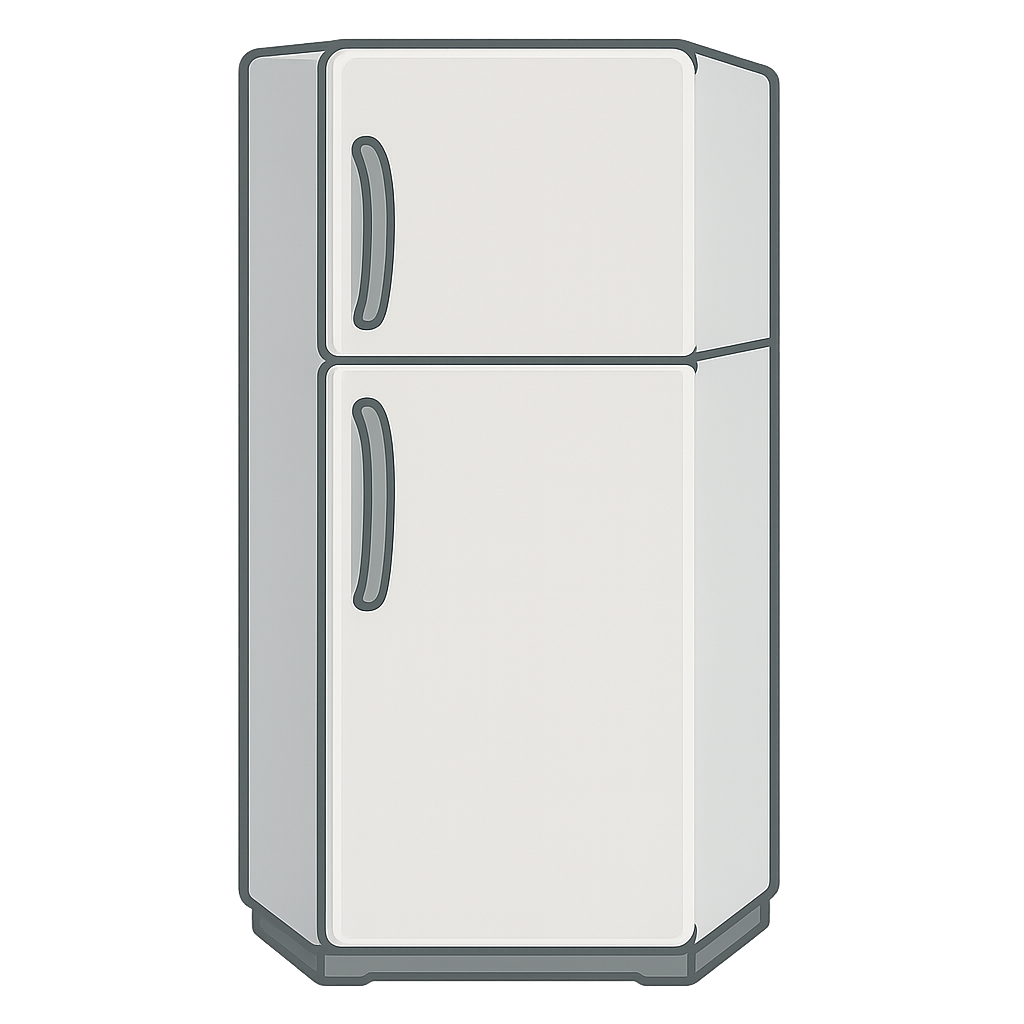The Refrigerator's Cool Story
You probably know me. I’m the one who hums quietly in your kitchen, the one with the cool, bright light that greets you when you open my door. I am the keeper of leftovers, the guardian of milk, and the secret to a perfectly chilled glass of juice. But have you ever wondered about the world before I existed? Before me, keeping food from spoiling was a constant, relentless battle. People relied on gloomy root cellars dug into the earth, or they used iceboxes—literally wooden boxes filled with huge blocks of ice that had to be delivered by an iceman. It was a race against time and warmth. Every meal was a challenge to preserve. This daily struggle against decay and disappointment was the very problem I was born to solve. My creation wasn't the work of a single flash of genius but the culmination of many clever minds working over many, many years to finally win the war against warmth.
My story doesn't begin with a hum, but with a simple idea. It was a Scottish professor named William Cullen who first demonstrated the principle of artificial cooling way back in 1755. He showed that evaporating liquids could create a chilling effect, a little bit of scientific magic that sparked a big idea. But an idea needs a plan, and that came from an American inventor named Oliver Evans in 1805. He sketched out the first designs for a refrigeration machine, dreaming of a world where cold could be created on demand. His ideas were brilliant, but they remained on paper for decades. It wasn't until 1834 that another inventor, Jacob Perkins, took those concepts and built the first real, working version of me. He used a remarkable process called vapor compression. It sounds complicated, but it’s a clever cycle. A special liquid inside my pipes is allowed to turn into a gas, and as it does, it absorbs all the heat from the air around it, making the inside of the box cold. Then, a compressor squeezes that gas back into a liquid, releasing the heat outside my back. This cycle, repeated endlessly, is the secret to my constant chill.
At first, I wasn't destined for kitchens. My purpose was far more urgent. In the 1840s, a compassionate doctor in Florida named John Gorrie was trying to help his patients suffering from tropical fevers. He believed that cooling their rooms would help them recover. Using my technology, he built a machine to create ice and cool the air in his hospital, bringing comfort and relief to the sick. His work showed the world that my cooling powers could be a force for health and healing. My potential was undeniable. Soon, brilliant engineers began to see how I could transform entire industries. A German genius named Carl von Linde perfected my design in the 1870s, making me powerful and reliable. His versions of me were industrial giants, put to work in breweries to control the fermentation of beer and in meatpacking plants to preserve food for long journeys. For the first time in history, fresh meat and other perishable goods could be shipped across continents and oceans. I was no longer just a scientific curiosity; I was feeding the world.
My journey from giant industrial machines to the heart of the home was the next big step. The first home model, the DOMELRE, appeared in 1913, but it was clunky and expensive. It was pioneering companies like Frigidaire and Kelvinator that began making me more accessible to families. Then, in 1927, General Electric introduced the famous 'Monitor-Top' refrigerator. With its distinctive round compressor on top, it looked a bit like a friendly robot. It was reliable, sealed, and safe, and it quickly became a symbol of modern convenience. Suddenly, households no longer had to worry about milk turning sour overnight or meat spoiling before it could be cooked. I became a fixture in kitchens across the country, a trusted member of the family. With me around, families could enjoy ice cream on a hot summer day, store leftovers for tomorrow's lunch, and have crisp, fresh vegetables anytime. I didn't just change kitchens; I changed the way families lived and ate.
My cool legacy is about so much more than just keeping your food fresh. By revolutionizing food preservation, I helped improve public health and nutrition. I made modern supermarkets possible, offering a variety of foods from all over the world that would have been unimaginable a century ago. My technology is also crucial in the world of science and medicine, where I keep vaccines, medicines, and scientific samples safe at precise temperatures. I have come a long way from a professor's curious experiment, and I’m still evolving. Today, my descendants are becoming smarter and more energy-efficient, always working to keep things cool in a way that’s better for the planet. All of this, from that first spark of an idea, was born from the simple, powerful need to control the cold.
Reading Comprehension Questions
Click to see answer
